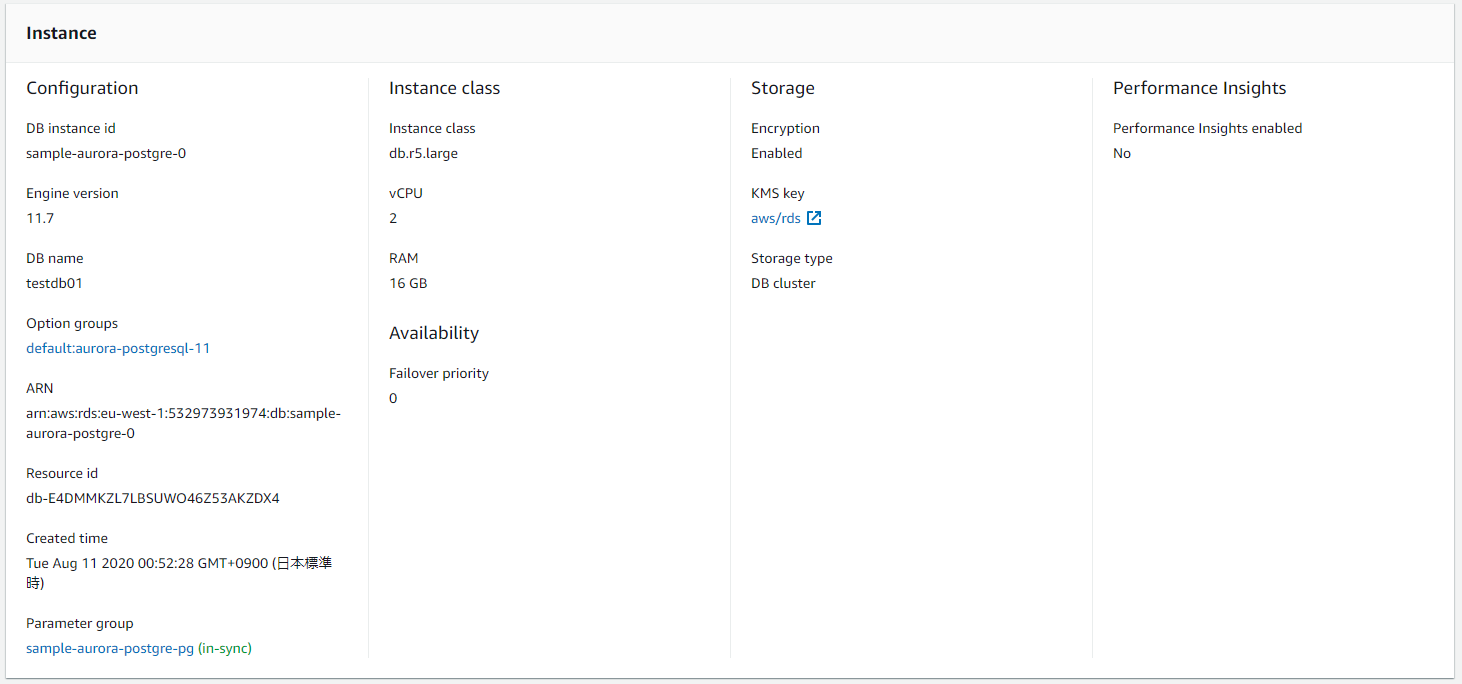
In this example there is only 1 table (people) in the database.

On the bucardo EC2 instance enter bucardo container docker exec -ti bucardo bashĪll bucardo commands should be executed by postgres user, so we need to assume postgres identity: su - postgresĪdd source database into bucardo system: bucardo add db sourcedb dbname=exampledb user=postgres pass=”POSTGRES_PASSWORD” host=. As a first step we need to make source DB start collecting deltas for tables we need to replicate. Then bucardo daemon which is running on bucardo instance replicates deltas from source DB to the target DB. Those functions save all metadata (like deltas) required for the replication into bucardo schema. The triggers execute PL/Perl functions on the specific events (AFTER INSERT OR DELETE OR UPDATE) which are stored in bucardo schema.
#Aws postgresql 10 install
To make sure it is enabled exampledb=> \dx List of installed extensions Name | Version | Schema | Description -+-+-+- plperl | 1.0 | pg_catalog | PL/Perl procedural language plpgsql | 1.0 | pg_catalog | PL/pgSQL procedural language (2 rows) exampledb=> Install bucurdo into the source databaseĮssentially, bucardo creates schema with the name bucardo, adds triggers to specified database’ tables. Add plperl extension to databaseĬonnect as postgres user (as superuser) to database psql -h. -U postgres -W exampledbĪnd add plperl extension CREATE EXTENSION plperl In this example, the user is postgres and the database name is exampledb, postgres user is also an owner of exampledb. To perform replication, bucardo connects to original RDS instance and the target RDS instance, it requires superuser access. Start bucardo container: docker run -restart unless-stopped -name bucardo -d maksymdolgykh/bucardo:v1.0.0 Prepare source database for replication Connect to instance over ssh and install docker and PostgreSQL client (we will use it to access original and new PostgreSQL servers from bucardo instance): sudo su - yum install docker postgresql systemctl enable rvice systemctl start rvice Once instance is deployed, make sure inbound port 22/tcp is allowed and all outbound traffic is allowed, so that you can access it over ssh and it can connect to RDS instances.
#Aws postgresql 10 how to
I won’t be describing how to deploy EC2 instance, it is just a basic EC2 instance which is accessible via ssh. In the real scenario, you might need bigger instance, depending on the velocity and volume of data to replicate. In this demo, we will use docker image on EC2 instance running Amazon Linux 2 AMI as the host OS, instance type t3.small. You can just use this docker image to run bucardo or build it from source. We are going to deploy bucardo instance in the same VPC as the source database. In this case it is a cross-region replication, so different VPCes.

If accounts or VPCs are different, you can deploy it in one of them. For instance, if both RDS instances are deployed in the same account and in the same region and VPC, you just deploy it in the same VPC. From the performance perspective, it is recommended to deploy it as close to RDS as possible to minimise latency. It doesn’t matter where you deploy this server, however it should be able to connect to both RDS instances - the source and the target. This is going to be temporary instance, once the migration is completed it can be deleted. The above diagram illustrates the migration workflow. The similar workflow with small modifications could be used for a few other use cases which are listed in the summary section. In this example, we will migrate the database from us-east-1 region to us-west-2 region. This article covers the process of the cross-region database migration (AWS RDS with PostgreSQL engine) using master-master replication with bucardo. We decided on bucardo which is a trigger-based replication tool and it uses PL/Perl extension which is supported by RDS. In a nutshell, 2 options bucardo and londiste seemed applicable for our case - RDS with PostgreSQL 9.4 engine, we needed zero downtime migration, ideally we wanted something with master-master replication so that we could roll back if something goes south. Basically, it is not possible to install anything on the host, so it is not possible to use solutions like BDR ( RDS supports pglogical starting from 9.6 but we had 9.4 at that point), Postgres-XL, etc. However, using a cloud solution like RDS puts you under some constraints.


 0 kommentar(er)
0 kommentar(er)
